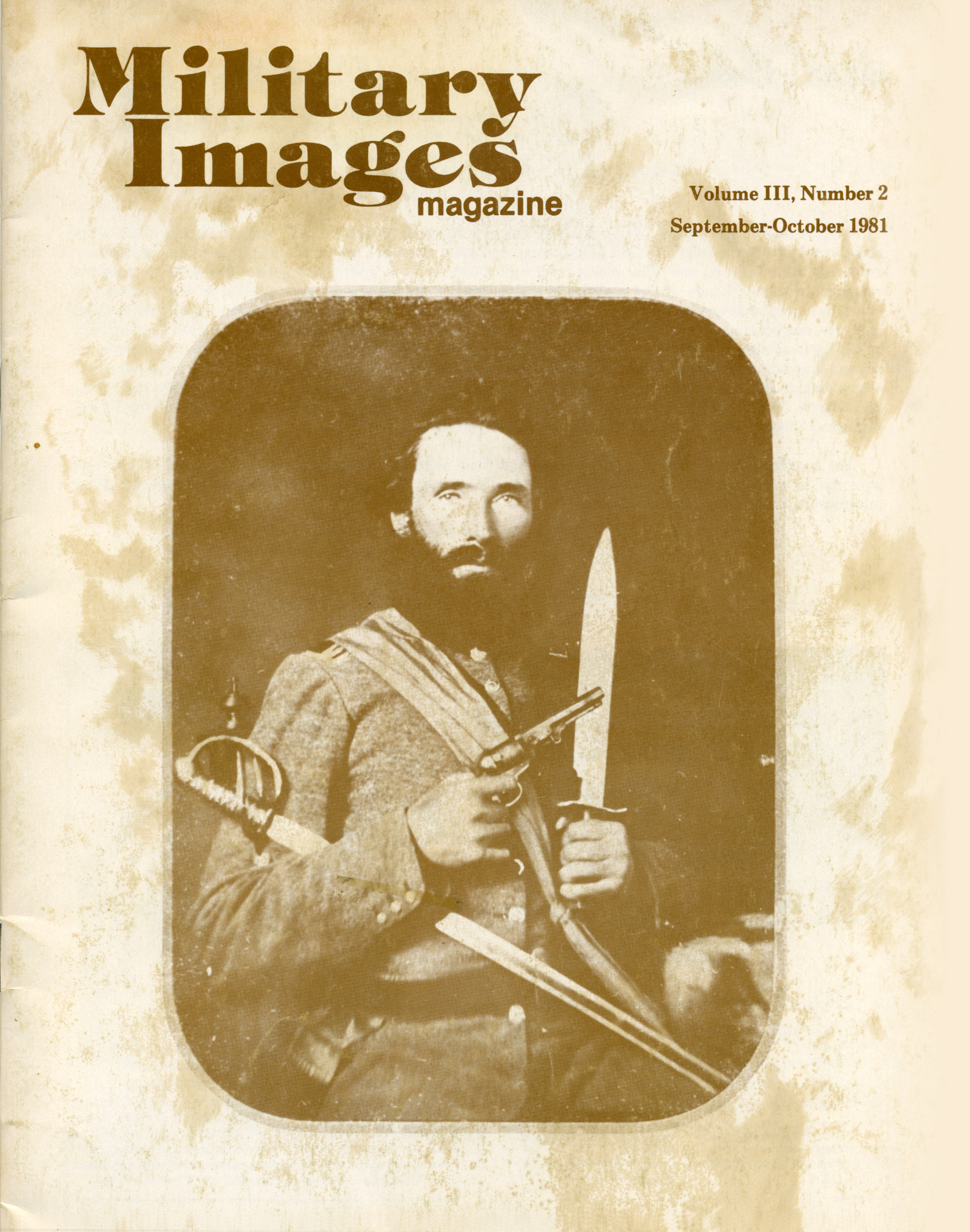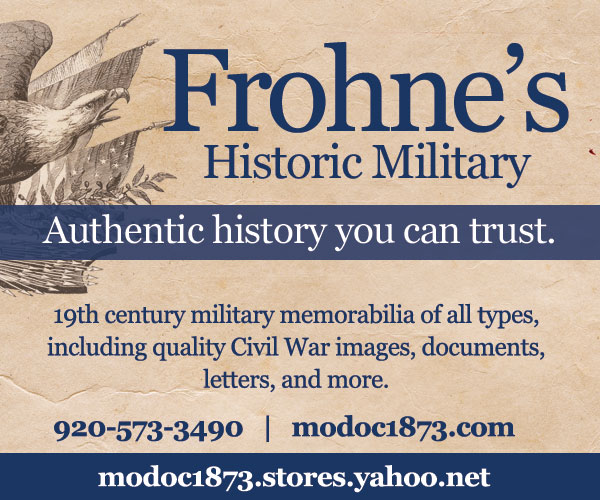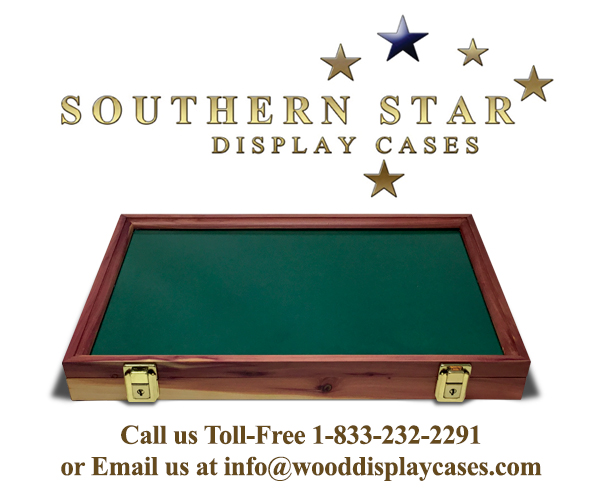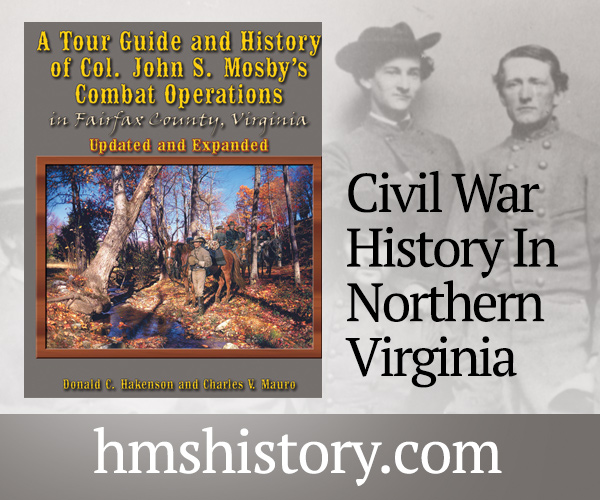The complete issue
Vol. 3, No. 2
(32 pages)
Print edition: Visit our store to check availability
Digital edition: Visit JSTOR.org to purchase
Subscribe to MI
Explore the MI Archives: Browse | Advanced search | Tutorial
Inside
Cover Image
Captain Houston B. Lowerie, adjutant of the 6th North Carolina Infantry, Law’s Brigade, Army of Northern Virginia, killed at Sharpsburg.
Editor’s Page (inside front cover)
The editor addresses the perception of readers that the publication has a Union bias. Most of the MI staff reenact with the 4th Texas Infantry, and he notes that there will be a number of Confederate focused articles in upcoming issues. The editor repeats his call for Confederate stories, as the submissions of the readership determine the contents of the magazine.
Mail Call (p. 2)
A number of readers send in their appreciation for the quality of the publication and for some of the articles in particular. One letter provides additional details on Christian Fleetwood, whose portrait was featured on a recent issue.
Virginia in October: Or Losing the Buckland Races by Alexander S. Barnes (p. 3)
The portrait of Lt. Willard Glazer of the Second Harris Light Cavalry of New York accompanies this article, which describes his capture by the Confederate cavalry led by Stuart and Gordon. Fought outside of Buckland Mills, Virginia on October 19, 1863, the rout of the Federal troops became known by the Rebels as the “Buckland Races.”
Three Views of the Militia by H. Michael Madaus (pp. 4-5)
Taken of different units from the “Old Northwest Territory” between 1860 and 1879, these images of full militia companies are considered quite rare. The first is from the Waukesha Home Guard taken in 1860 prior to the outbreak of the Civil War. They feature grey uniforms with dark trousers which were replaced with the state issue militia uniform when they became Company F, 5th Regiment, Wisconsin Volunteer Infantry in 1861. The second image is of a company of apparently new recruits from during the war, perhaps called up to engage in the Great Sioux Uprising or to become part of a new Union contingent. A notation on the reverse identifies the unit as being from Sheboygan in 1863, but a comparison between the picture and Wisconsin records of the “Lima Home Guards” or the “Sheboygan Falls Home Guard” do not match the weaponry shown. Finally, another enigmatic unit apparently from Illinois is shown, wearing uniforms of the 1872 regulations.
Across the Plains by Mark H. Jordan and Dennis S. Lavery (pp. 6-9)
Excerpted from an upcoming biography on John Gibbon called Iron Brigade General, the article describes the Army convoy that left Fort Leavenworth in June 1860 for Camp Floyd, Utah. The article goes into detail regarding the family life of the Gibbons family during the trek, including humorous incidents that happened along the way, such as buffalo being chased by a lieutenant on a mule (future Confederate General John B. Villepigue) and a colonel who declined to eat a pie made from crow (future Union General Philip St. George Cooke). The others who took part in the journey reads almost like a “who’s-who” of the Civil War, such as Bernard Bee and John Buford, and brings a more relaxed and human image of these men who now have such martial reputations.
A Leatherneck in France, 1917-1919 by Albert E. Powis (pp. 10-15)
The personal recollections of a machine gunner who served with the U.S. Marine Corps in France are published for the first time in this issue of Military Images. Covering his service in the 66th Co., 1st Btn., 5th Marines from training through the trenches of France and then back home, these frank and candid descriptions allow the reader to discover how trenches were built, what the weaponry was like, and what the fighting was like that got his unit called the “U.S. Devil Dogs” by the enemy. It is powerful and compelling reading, accompanied by several of Powis’ collection of photographs of his comrades and officers at war.
Passing in Review (p. 15)
This issue of MI includes reviews of three publications. The first is The 4th Mariends and Soochow Creek: the Legend and the Medal by F.C. Brown, J.E. Lelle, and R.J. Sullivan which describes the “China Marines” that served in the Shanghai International Settlement from 1927 to 1941. The second book is Ten More Texans in Gray, edited by W. C. Nunn, which is a sequel to a previous work. Each of the ten biographies is written by a graduate student of the editor at Texas Christian University and covers a range of influential Texans who fought for the Confederacy. Lastly is a guide entitled Civil War Genealogy by George K. Schweitzer, which provides a wealth of resources for those beginning research on their Civil War ancestry.
Survey: Warriors in Grey by T. Sherman Harding (pp. 16-23)
This pictorial article features 22 separate images of Confederate soldiers, many of them unidentified, from the collection of Mr. Harding as photographed by George Mensch and Ray B. Wooster. Some of the unusual images include a ninth-plate ambrotype of a Confederate with a buttoned up tri-corner hat that converted into a slouch hat when unbuttoned, a sixth-plate ambrotype of fully-equipped soldier with all his equipment, and a sixth-plate ambrotype of two Confederates wearing “militia” shirts.
Memoirs of Carlos W. Colby edited by Joseph Bilby (pp. 24-29)
Serving in Company G of the 97th Illinois Infantry, Colby wrote his memoirs of his service in the Civil War in 1910 when his eyesight began failing. There is no formal history of his unit outside of this memoir, and is of historical value as the 97th Illinois took part in some lesser known campaigns. The editor provides corrections when needed and context to the memoirs. Colby recounts the action at Vicksburg that led to his award of the Congressional Medal of Honor, his many encounters with General Grant, and his exploration around the city of Vicksburg after its surrender. The memoirs provide a great deal of information about a military career that saw a great deal of action, some tragic, some humorous, and some laden with irony.
Stragglers (pp. 30-31)
Five different images are included in this edition of “Stragglers” with two of them posing questions for the readership. A quarter-plate tintype of a Union soldier shows an unusual pistol in his belt and a rare 1858 Enfield rifle; three firearms experts were unable to come to a consensus as to the make of the pistol. A very young Yankee first sergeant wearing a frock coat with very unusual markings was also submitted; another collector has an image of a different soldier wearing the exact same unique frock. Readers are asked to provide their insight to these two puzzling images.
Back Image
An unidentified New York Zouave wearing a plaid shirt is featured.





































